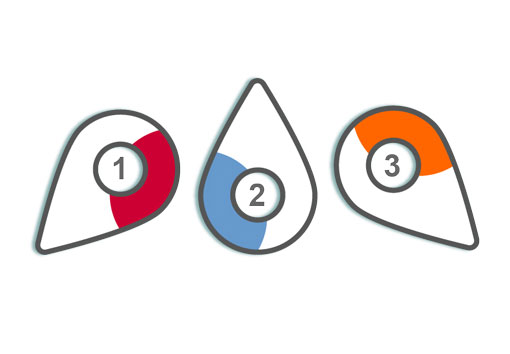Ideas
“Everybody has great ideas…Ideas are easy! Don’t get too hung up on your BIG idea, be ready to throw it into the bin….and start again.” These were the famous words of Adam Lawrence, one of the co-authors of This is Service Design Doing book. Even though in this section we will be generating ideas for our problem, the real proof will be in making these ideas tangible and testing them later. Many people in business get obsessed with ideas. But they never test them first and that’s how many products and services fail. Let’s start with learning how to come up with ideas!

Well, let’s get back to our problem and to our insights from the observations of the Campus and our students Adrian and Jack.
Let’s remind ourselves of the problem: How might we create an inclusive Campus environment for students of diverse backgrounds and abilities to enjoy outdoor activities together in a safe and fun way?
Let’s move on to generating ideas, and let’s try a new way. Are you up for it?

Let’s try and be bold and go for wild ideas! Sometimes what may seem ridiculous may be actually brilliant! Don’t judge your thinking, just do it without worrying about what others will think. This method is called a mash up – combining concepts from different aspects of life and broadening your ideas’ reach.
Task: Idea generation exercise – 3 steps

Let’s think about various categories in our lives in which we engage with a variety of services and products. Are there any ideas from these categories that may relate to the problem:
Problem: How might we create an inclusive Campus environment for students of diverse backgrounds and abilities to enjoy outdoor activities together in a safe and fun way?
- CATEGORY 1: Favourite holiday activities.
- CATEGORY 2: Common objects in the University library.
- CATEGORY 3: University places that make you laugh out loud (have a look at the photo album in section 2 – that may spark your imagination).
- CATEGORY 4: Things you do on a long train journey.
- CATEGORY 5: Shopping routines that make you feel happy

Task: Idea generation exercise – 3 steps
Step 1
Pick two categories within which you would like brainstorm products or services you associate with these categories – make a list in each of the categories.
‘One category at a time, generate as many responses as you can’.
Step 2
Combine items from the two different lists to develop new ideas.
Step 3
Describe your idea and communicate its value in ways that are relevant to your problem.

HERE IS AN EXAMPLE FOR YOU 🙂
- Category 1 PLUS Category 3 = NEW IDEA!!! (in your ideation you can combine any categories you wish, go wild!)
- Category 1: Favourite holiday activity is being outdoors and having a picnic in the park
- Category 3: University place that makes you laugh out loud is a student kitchen after a party
NEW IDEA = being outside with my classmates and having fun – organising outdoor learning parties where we reward ourselves with food from different countries and we share our prep for the lectures in a safe outdoor space…


So what do you think about my idea that came out of my mash up? – Campus can have designated rainproof open spaces like accessible picnic spots on a level ground (for easy mobility access) so we can enjoy being outdoors, sharing our learning and sharing our food as well!

You have worked really hard! Wow what a great effort. Well done, innovators! You definitely deserve a good movie night after all this. Let’s enjoy Ratatouille and at the same time reflect on your ideas as you are watching this short clip. Do your ideas really reflect the needs of Adrian and Jack?
In this animated movie, Remy, a rat, discovers he has a gift for cooking. But that’s beside the point. A food critic, Ego comes to a restaurant where Remy is cooking with his human helper, Linguini. To impress the food critic, they have to serve him something truly special. Instead of a sophisticated dish, they cook a common dish – ratatouille. But the reaction is priceless…

Key learning:
Experiences are always personal. Remy and his human helpers are good chefs, so they can prepare great food. But the visceral reaction from Ego could not have been predicted. You can plan for a great service in detail… but how it is experienced will depend on the consumer. His or her previous experiences, memories, expectations are the filter through which your service is consumed.
The more you know about your consumers, the more you can personalise your service, and the better the reaction you can expect.
Skills gained throughout this section:
Skill flower: [1]. Spotting opportunities [2]. Creativity [3]. Valuing ideas.

